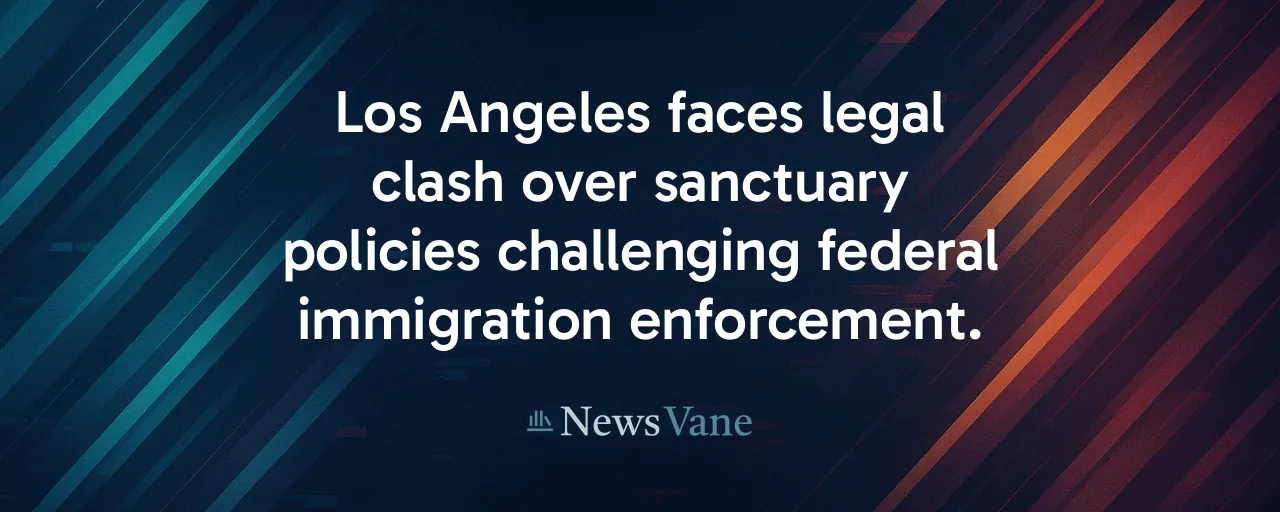A City Divided by a Lawsuit
Los Angeles is at the heart of a legal storm. The Trump Administration's lawsuit, filed on June 30, 2025, targets the city's sanctuary ordinance, claiming it obstructs federal immigration enforcement and fuels unrest. Mayor Karen Bass fired back, calling it political theater aimed at punishing cities that protect immigrant families. The clash revives a decades-old debate about how local governments balance public safety with community trust.
The ordinance, adopted in December 2024, limits the city's role in federal immigration efforts. It restricts sharing information with Immigration and Customs Enforcement (ICE) except for serious crimes and bars city resources from aiding deportations. For Bass and supporters, it's about keeping families intact and ensuring residents feel safe reporting crimes. The federal government, however, sees it as a direct challenge to its authority.
This legal spat serves as a flashpoint for a broader national divide. Protests erupted in June 2025 after federal raids and troop deployments, highlighting tensions between local priorities and national policy. The question now is whether Los Angeles can protect its residents while navigating federal pressure.
The Roots of Sanctuary Policies
Sanctuary policies aren't new. They trace back to the 1980s, when churches sheltered Central American refugees fleeing violence. Berkeley passed the first resolution in 1971, and San Francisco's 1989 ordinance set a precedent. These policies vary widely, from refusing to ask about immigration status to rejecting ICE detainer requests unless backed by a warrant.
Los Angeles has long leaned toward sanctuary practices, but the 2024 ordinance formalized them. It reflects a belief that local police focus on community safety, not federal immigration tasks. Studies from 2017 to 2024 support this, showing sanctuary cities often have lower violent crime rates and stronger economies. For example, sanctuary counties report higher median incomes and lower unemployment than non-sanctuary ones.
The federal government argues these policies undermine national security. The Justice Department points to cases where local jails released non-citizens who later committed crimes. Both sides cherry-pick data, but the evidence suggests sanctuary policies don't inherently increase crime.
Safety Versus Enforcement
At the core of the debate is public safety. Advocates for Los Angeles' ordinance argue it builds trust. When immigrants fear deportation, they're less likely to report crimes or cooperate with police. Research supports this; cities with non-cooperation policies see no spike in crime and sometimes even slight declines. This trust can prevent unreported crimes from escalating.
On the other hand, federal officials claim sanctuary policies shield dangerous individuals. ICE data highlights instances where non-citizens, released due to local non-compliance, later faced new charges. These cases, while real, are a small fraction of overall crime. Most criminologists find no clear link between immigration status and higher crime rates.
The legal battle hinges on constitutional questions. Federal law requires some information-sharing, but it can't force local police to detain people for ICE. Courts have upheld this principle, citing the Tenth Amendment, which protects local governments from being commandeered. Still, the Supremacy Clause gives federal law precedence, creating a gray area that fuels litigation.
Economic and Social Stakes
Beyond safety, the lawsuit carries economic weight. Los Angeles risks losing federal grants for policing, housing, and infrastructure if it defies the government. Large-scale deportations could also disrupt industries like construction and hospitality, where undocumented workers play a key role. Local businesses worry about labor shortages and reduced consumer spending if immigrant families leave.
Socially, the impact is already visible. Fear has spread among mixed-status families, with some avoiding schools or healthcare. Protests in June 2025 showed how quickly tensions can boil over. If trust erodes further, police may struggle to maintain community cooperation, affecting everything from crime reporting to emergency response.
The city faces a tough choice: stand firm and risk funding or comply and alienate residents. Either way, the ripple effects will shape Los Angeles' social fabric and economy for years.
Finding Common Ground
The lawsuit doesn't have to end in a stalemate. Compromise is possible. One option is clearer rules for cooperation, like requiring local jails to honor ICE detainers only for those convicted of violent felonies. This could address federal concerns while protecting most immigrants from deportation.
Another idea is federal reimbursement for local costs. If ICE wants cities to hold detainees, it could cover the expenses, easing the burden on taxpayers. Joint task forces targeting serious criminals, like transnational gangs, could also align federal and local goals without undermining community trust.
Bipartisan federal legislation offers a longer-term fix. Combining legal status pathways for undocumented residents with stronger border technology could reduce unauthorized entries while addressing humanitarian concerns. Such a deal requires both sides to prioritize pragmatism over politics.
A Path for Los Angeles
Los Angeles stands at a crossroads. The lawsuit tests its commitment to protecting all residents while navigating a complex legal and political landscape. Research shows sanctuary policies can coexist with public safety, but they must be carefully designed to avoid loopholes that release serious offenders.
The city's leaders, from Mayor Bass to the City Council, engage residents and federal officials alike. Transparent communication can rebuild trust, while targeted cooperation on violent crime can defuse accusations of lawlessness. Los Angeles has the chance to model a balanced approach that other cities could follow.
As the nation watches, the outcome will shape not just Los Angeles but the future of sanctuary policies nationwide. By focusing on trust, safety, and practical solutions, the city can chart a course that respects its diverse communities and upholds the rule of law.
